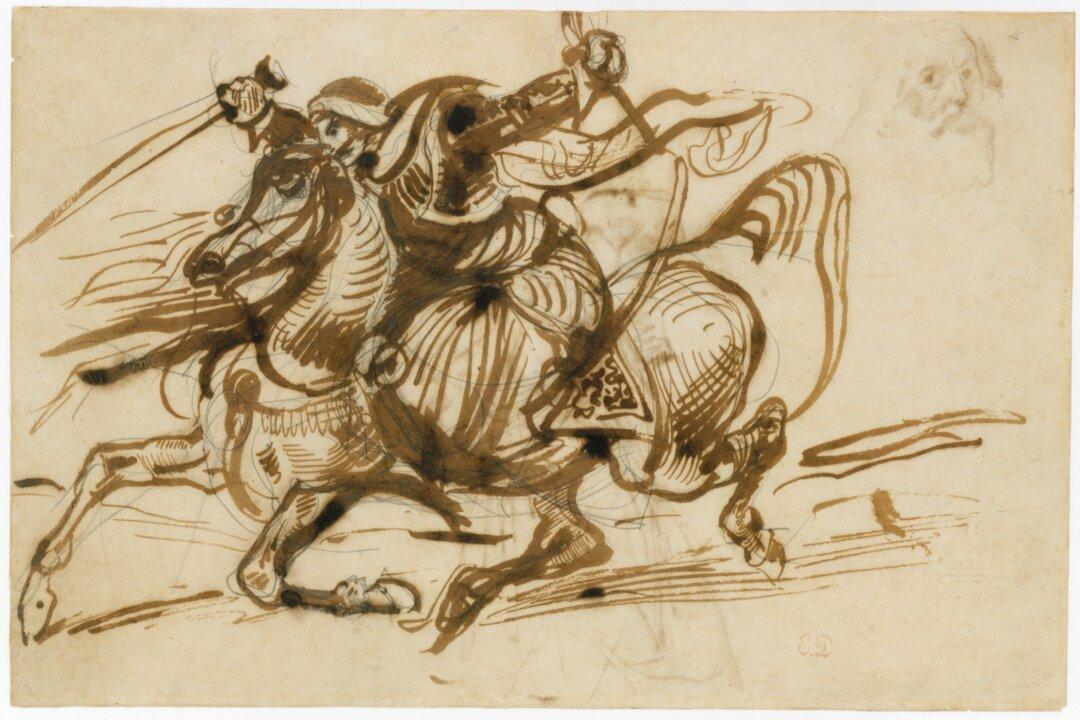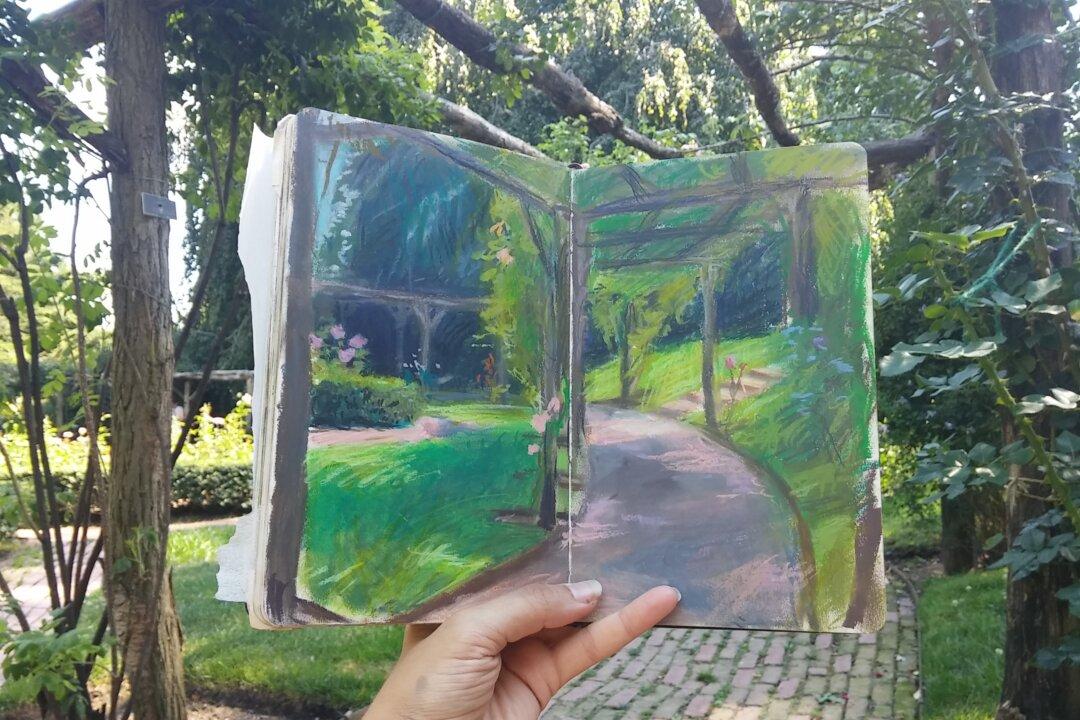NEW YORK—“Many people have some knowledge of Delacroix the painter; far fewer know Delacroix the draftsman,” Ashley E. Dunn said, introducing the exhibition that she organized, “Devotion to Drawing: The Karen B. Cohen Collection of Eugène Delacroix” at The Metropolitan Museum of Art. Indeed, even for those unfamiliar with the French Romantic painter’s name, Eugène Delacroix (1798–1863), they would recognize his allegorical painting of the robust, bare-breasted female figure holding the tricolor flag while leading people over a barricade with fallen bodies in the foreground, “Liberty Leading the People.” Now we can see Delacroix’s figure study drawings in preparation for that emblematic painting for the French Republic, along with more than 130 other drawings by the artist, until Nov. 12.
Delacroix’s Secret Devotion to Drawing
The Karen B. Cohen Collection of Eugène Delacroix, at The Met

"The Giaour on Horseback,"
1824–26, by Eugène Delacroix (French, 1798–
1863). Pen and iron gall ink with wash over graphite, 7 15/16 inches by 12 inches. The Metropolitan Museum of Art, a gift from the Karen B. Cohen Collection
of Eugène Delacroix, in honor of Jane Roberts, 2015. The Metropolitan Museum of Art
|Updated:
Feature writer contributing to the Arts & Culture section of The Epoch Times, online and in print. Email: [email protected]
Author’s Selected Articles





